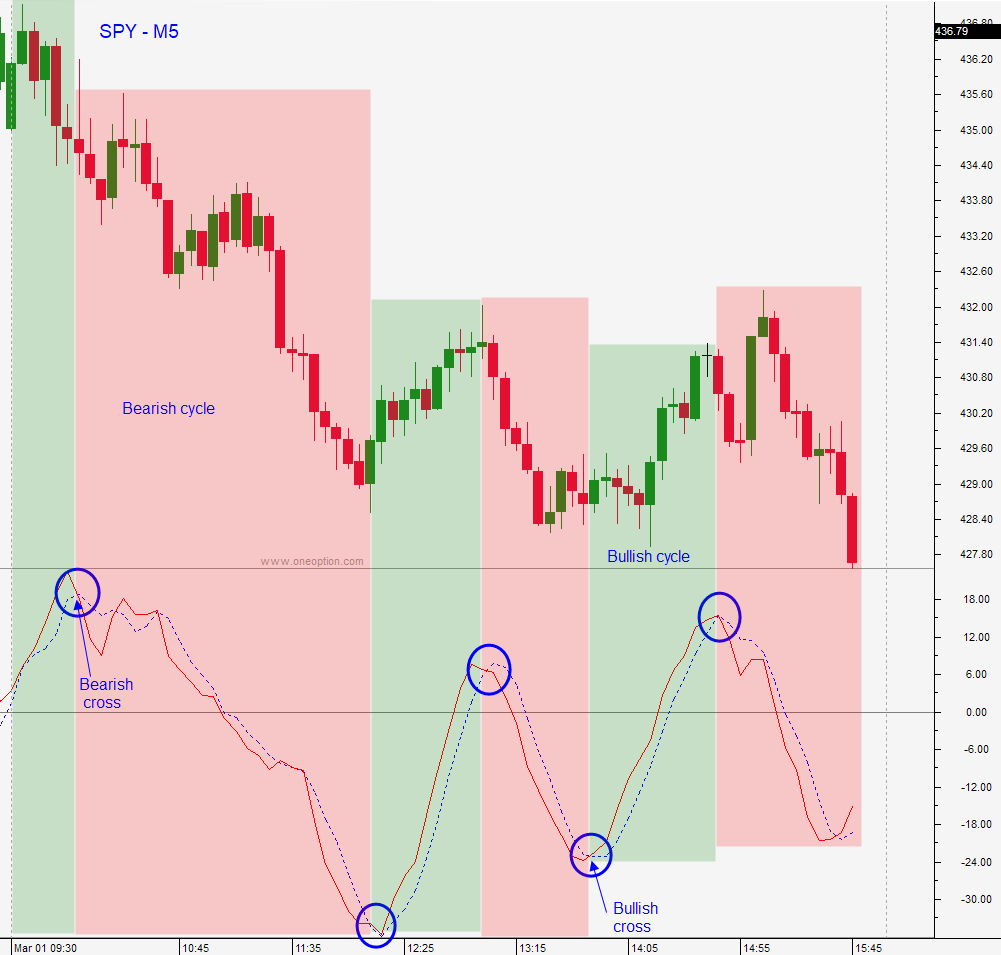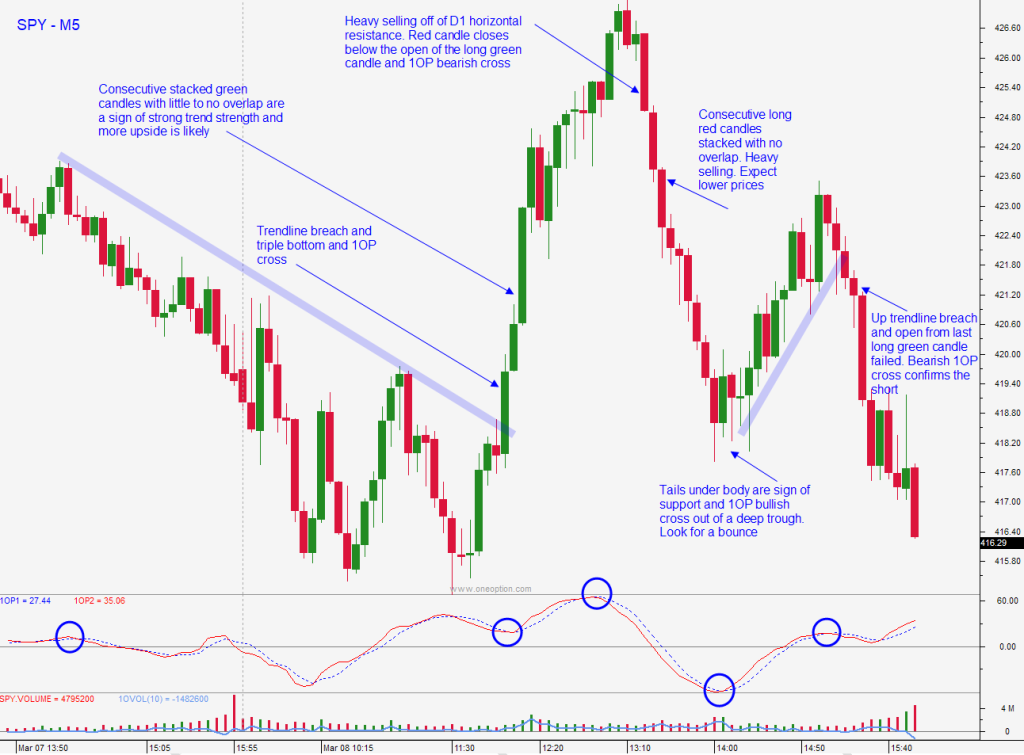Why Market First?
Author
PeteThis article is part of our Introductory Series. Visit Start Here to learn more.
Market First
More than 75% of all stocks follow the market. If you get this puzzle piece right your chances of success increase dramatically. If you get it wrong, your chances of failure are great. Getting the market right is by far the most critical element in your trading success.
Your long-term and short-term market analysis will result in a directional bias and a confidence level. That outcome drives ALL of your trading decisions. We primarily use technical analysis to form our longer-term and shorter-term market opinion.
Market Indicator
The 1OP indicator is all we use to trade the S&P 500 and it works across multiple time frames. It stands for 1OPtion and this proprietary indicator took 10 years to develop. This is the only indicator we use for the S&P 500. The 1OP is predictive, not reactive: this is a big difference. The 1OP indicator performs two very important functions. It provides us with a directional bias and the cycles help us time our trades.
When 1OP is rising it is in a bullish cycle. During a bullish cycle we expect the market and stocks to rise. When the indicator spikes it is a sign that the rally is getting tired and that is a good time to start scaling out of long positions. When the indicator rolls over a bearish cycle begins. Remember the indicator is predictive and that means we need price confirmation. That can be a trendline breach, a horizontal support breach, or even a bearish candlestick formation. When the sell signal is confirmed technically you would take gains on your remaining long positions and you would take short positions. During the bearish cycle, you want to see organized selling and consecutive red candles. That would be a sign of selling pressure that will confirm the short position. As the 1OP indicator dives deeply into negative territory you should be prepared to take profits on the pending bullish cross. This indicator helps us identify reversals and it helps us time our trades.

There are instances when 1OP generates a signal and the market does not behave as we expect. This happens about 20% of the time and we call those divergences. They are extremely powerful because they confirm the current trend strength. We expect them and we watch for them when the momentum in one direction is very strong. In the example below, we have consecutive red candles with little overlap. If the market can’t get any lift during the bullish cycle, this confirms that the selling pressure is heavy and that we can expect more downside on the next bearish cross.

Technical analysis
We stick to the basics when it comes to technical analysis. We use trendlines, horizontal support/resistance, major moving averages, and price patterns. If other traders can look at a chart and reach the same conclusion, the metric has merit. It is critical for us to have a longer-term and shorter-term market bias. In the chart below we can see that the market has broken major technical support levels and it is spending time below those support levels. This is a sign of persistent selling on a longer-term basis and the downward sloping channel tells us that we should sell bounces and take gains on big drops.

On a short-term basis, we also use trendlines and horizontal support and resistance. We do not use major moving averages on intraday charts and we lean more heavily on price patterns and 1OP. The play-by-play analysis is depicted in the chart annotations below. Notice how the longer-term support (now resistance) in the daily chart came into play on the 5-minute chart.

We publish our pre-open market comments each morning and they are your road map the moment you join. Visit our blog to view recent market comments.
We can and we do trade S&P 500 futures based on 1OP trade signals. However, there is an advantage to trading stock as a surrogate market position. In the next section, we will describe that “edge” and we will show you how we find the best stocks.

